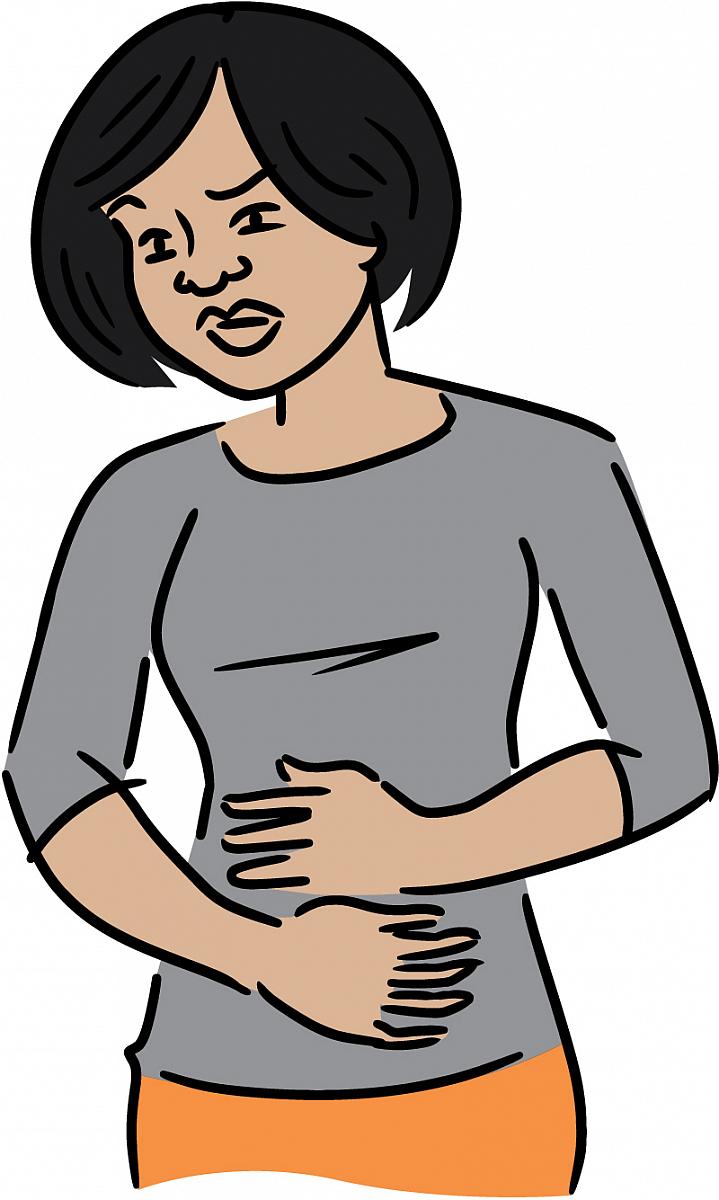Strange Migrations and Killer Cramps
Understanding Endometriosis

Endometriosis is linked to pain and infertility for many women. It arises when cells like those that line the uterus (the endometrium) attach to other tissues and grow inside the lower belly. These out-of-place cells may be just the start of a problem that, for some, lasts a lifetime.
Endometriosis affects up to 1 in 10 women of childbearing age. The pain it causes can range from extreme to barely noticeable. A woman may not know she has the disease until she has trouble getting pregnant and her doctor makes the diagnosis. About 40% of women with infertility turn out to have endometriosis.
“Endometriosis is an incredibly complex disease. Its causes have been kind of a mystery, and we’re not sure how to prevent it,” says NIH scientist and gynecologist Dr. Pamela Stratton. She and other NIH-funded researchers have been gradually adding to our understanding of the condition. They’re working to find better ways to diagnose and treat endometriosis, and maybe even prevent it.
Many scientists think that endometriosis results when some of the endometrial tissue shed from the uterus during menstruation flows backward into the pelvis. This strange migration—called retrograde menstrual flow—likely happens to most women, but it doesn’t always lead to endometriosis.
Researchers are trying to figure out why some women have endometrial cells that stick and grow where they don’t belong, and why other women don’t. These misplaced cells—sometimes called lesions or implants—can also form scars between tissues and organs like the bladder, intestine or ovaries. Surprisingly, scientists have found that the number and size of lesions aren’t related to how severe the symptoms are.
To diagnose endometriosis, doctors often use imaging tests like ultrasound and MRI to look for signs of internal lesions. But the only way to be certain you have endometriosis is with surgery, usually laparoscopy. For this procedure, the surgeon makes a small cut in the abdomen and inserts a tiny light at the end of a tube, or laparoscope. The instrument allows the doctor to view patches of endometriosis inside the pelvic area. Some lesions can be removed during laparoscopy. Removing lesions—especially deep lesions—sometimes helps to relieve pain.
Most often, though, endometriosis pain is treated with hormoneA molecule sent through the bloodstream to signal another part of the body to react a certain way. therapy, usually birth control pills. These medications can suppress the body’s natural production of reproductive hormones and lighten the menstrual flow, which can help ease pain.
“There’s a lot of active research into the basic biological mechanisms of endometriosis. There’s so much we don’t yet know,” says NIH’s Dr. Esther Eisenberg, an expert in reproductive health. “Once we understand the mechanisms, we’ll have better tools to help women deal with this serious problem.”
Since endometriosis tends to run in families, researchers have been searching for culprit genesStretches of DNA, a substance you inherit from your parents, that define characteristics such as how likely you are to get certain diseases.. Some are also looking for molecules in the blood that might help detect endometriosis without the need for laparoscopy. Others are testing potential new treatments in clinical trials.
While there’s currently no cure for endometriosis, there are ways to minimize its symptoms. Work with your doctor to explore your treatment options.
NIH Office of Communications and Public Liaison
Building 31, Room 5B52
Bethesda, MD 20892-2094
nihnewsinhealth@od.nih.gov
Tel: 301-451-8224
Editor: Harrison Wein, Ph.D.
Managing Editor: Tianna Hicklin, Ph.D.
Illustrator: Alan Defibaugh
Attention Editors: Reprint our articles and illustrations in your own publication. Our material is not copyrighted. Please acknowledge NIH News in Health as the source and send us a copy.
For more consumer health news and information, visit health.nih.gov.
For wellness toolkits, visit www.nih.gov/wellnesstoolkits.